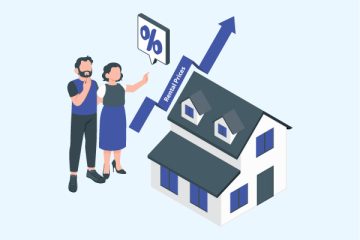Real estate technology has experienced and continues on a journey of massive transformation driven by data, artificial intelligence, and computer vision. When it comes to client engagement a few key related capabilities have independently evolved in the market:
- Automated Valuation Models (AVMs), which were originally developed to assess property values within large portfolios held by the banks, entered the market for mainstream consumer use in the mid 2000s when Zillow introduced Zestimate. Many other large national IDX portals have since added property values.
- As traditional players in the AVM market jumped in with their consumer grade valuation models real estate website developers have harnessed those AVMs and MLS data to produce instant Home Value Reports.
- Comparative Market Analysis (CMA) tools successfully moved from being printed on paper to mostly online versions with snazzy presentation capabilities on tablets.
Even though all of the above are in the agent’s toolbox, each of them work independently and there is little to no integration across them.
So, instead of asking your software vendors for a list of their features, the question must be how their features are integrated together for a better customer experience and better outcomes for your business.
How do these approaches differ?
AVMs are complex data-driven algorithms that analyze various factors such as property characteristics, recent sales, neighborhood trends, and economic indicators to estimate a home’s value. There are numerous benefits and they include:
- Speed and Efficiency: AVMs provide instant valuations allowing buyers to gauge their affordability and sellers to understand a possible sale price range.
- Consistency: Unlike humans, AVMs can apply consistent criteria and minimize bias
However, AVMs have limitations. They rely heavily on data availability and may not account for certain unique property features or local nuances.
CMAs, on the other hand, offer a personalized touch. Real estate professionals create CMAs by manually selecting comparable properties, adjusting for differences, and providing a detailed analysis. Here’s why CMAs matter:
- Tailored Insights: CMAs consider property-specific features, neighborhood dynamics, and market conditions.
- Human Expertise: Real estate professionals bring their expertise to the table, interpreting data and providing context.
As a result CMAs facilitate meaningful conversations with clients, addressing their concerns and goals.
What is possible with integration from AVM to CMA?
Agents are often challenged by their clients on a home’s value based on information they gathered from Zillow or Realtor.com. This places the agents in a challenging position when it comes to defending the value they propose.
Agents first of all should be at the forefront of these value conversations with their clients. So, the agents’ website or IDX portal should be the first place for their clients to view a property’s value powered by an AVM. With a few key related capabilities the agent can now easily progress the client on their website.
Imagine the following:
- Client browses the agent’s website and finds a few interesting properties and explores their list price versus the recommended AVM generated value.
- When a client arrives at a short list of properties, they request a Home Value Report for those properties.
- The website now generates a report for each property – not just an AVM value, but a comprehensive CMA fully auto-generated using machine learning models that can select the best comps and apply adjustments for differences and also include a detailed neighborhood trends.
- In addition to sending it to the client, the system also sends a copy of it to the agent for a second look.
- The agent reviews the report and notices that a comp or an adjustment could be better.
- The agent now edits the same report to select alternative comps or make some adjustments, adds their personalized notes and a short narrative on the market. (By now custom CMAs should ring a bell for the reader)
- The client gets a notification that their agent made an edit to the home value report and is able to see the edits live online.
- The client is immensely impressed that their agent is directly engaged in their thinking process.
- The agent has harnessed an opportunity to build trust.
This is a game changer for the agents because they have now switched the conversation from a defensive posture to a trustful engagement.
The most important takeaway is the integration of these capabilities, not just the availability of all of them in a single platform – websites, chatbots, IDX portals, AVMs, and CMAs.
So, instead of asking your software vendors for a list of their features, the question must be how their features are integrated together for a better customer experience and better outcomes for your business.
Latest Blogs

AVMs to custom CMAs: A Comprehensive and Integrated approach to Client Engagement
Real estate technology has experienced and continues on a journey of massive transformation driven by data, artificial intelligence, and computer…
Read more
Investors in Real Estate: An Opportunity for the Local Agent
The rental market has grown rapidly since the pandemic and rental prices are nearly 30% higher than they were before…
Read more
Building long-term client relationships with “Claim My Home”
The real estate industry is inherently built on relationships, and successful real estate agents and brokers understand the importance of…
Read more


